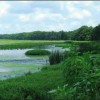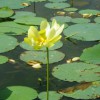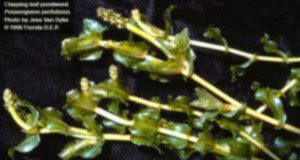This new 9-page factsheet describes the defining characteristics of the eleven pondweed species that are present in Florida. It serves as a pondweed identification guide for aquatic habitat managers, lake monitors, conservationists, and plant enthusiasts, and it gives some context on each species’ life history and ecological role. Written by Christine Rohal, Laura Reynolds, Carrie Reinhardt Adams, and Charles Martin, and published by the UF/IFAS Department of Soil and Water Sciences.
https://edis.ifas.ufl.edu/ss686
Tag: Aquatic Plants
A Beginner's Guide to Water Management: Aquatic Plants in Florida Lakes
 This circular represents a summary of current knowledge on aquatic plants and aquatic plant management strategies, highlighting the Florida situation. The major focus of this circular is the management of aquatic plants as opposed to dealing with nutrients, algae, or water clarity. Included are sections on aquatic plant biology, aquatic plant management problems, and aquatic plant management techniques. This 43-page guide was written by Florida LAKEWATCH; reviewed by Mark Hoyer, and published by the UF Department of Fisheries and Aquatic Sciences, June 2014.
This circular represents a summary of current knowledge on aquatic plants and aquatic plant management strategies, highlighting the Florida situation. The major focus of this circular is the management of aquatic plants as opposed to dealing with nutrients, algae, or water clarity. Included are sections on aquatic plant biology, aquatic plant management problems, and aquatic plant management techniques. This 43-page guide was written by Florida LAKEWATCH; reviewed by Mark Hoyer, and published by the UF Department of Fisheries and Aquatic Sciences, June 2014.
http://edis.ifas.ufl.edu/fa163
American Lotus, Yellow Lotus: Nelumbo lutea
 American lotus is an ideal native plant for constructed or restored wetland areas, where it provides shelter, habitat, and food for wildlife. It is an herbaceous aquatic perennial native plant that tolerates a wide range of conditions. The fragrant yellow flowers, huge round leaves, and persistent seed pods borne on stiff stalks high above the water make it both distinctive and visually striking. Native American tribes treated the American lotus as a sacred plant with mystical powers, and many tribes ate the large rhizomes and used parts of the plant for medicinal purposes. This 3-page fact sheet was written by Warner Orozco-Obando and Lyn Gettys, and published by the UF Department of Agronomy, March 2014.
American lotus is an ideal native plant for constructed or restored wetland areas, where it provides shelter, habitat, and food for wildlife. It is an herbaceous aquatic perennial native plant that tolerates a wide range of conditions. The fragrant yellow flowers, huge round leaves, and persistent seed pods borne on stiff stalks high above the water make it both distinctive and visually striking. Native American tribes treated the American lotus as a sacred plant with mystical powers, and many tribes ate the large rhizomes and used parts of the plant for medicinal purposes. This 3-page fact sheet was written by Warner Orozco-Obando and Lyn Gettys, and published by the UF Department of Agronomy, March 2014.
http://edis.ifas.ufl.edu/ag380
Common Aquatic Plants of Lake Okeechobee: Identification, Value, and Management (SSAGR362/AG371)
 Aquatic and wetland plants are essential to the ecology of Florida lakes, such as Lake Okeechobee, but they can also pose ecological and water use problems. This 16-page fact sheet provides information about the plants of Lake Okeechobee and outlines the importance of certain plants to the lake, problems caused by some plants, and the methods used to manage plants for the benefit of the entire lake environment. Written by K.A. Langeland and C.C. Jacono, and published by the UF Department of Agronomy, July 2012.
Aquatic and wetland plants are essential to the ecology of Florida lakes, such as Lake Okeechobee, but they can also pose ecological and water use problems. This 16-page fact sheet provides information about the plants of Lake Okeechobee and outlines the importance of certain plants to the lake, problems caused by some plants, and the methods used to manage plants for the benefit of the entire lake environment. Written by K.A. Langeland and C.C. Jacono, and published by the UF Department of Agronomy, July 2012.
http://edis.ifas.ufl.edu/ag371
CIR111/FA163 A Beginner’s Guide to Water Management: Aquatic Plants in Florida Lakes
Information Circular 111, a 27-page illustrated circular prepared by Florida LAKEWATCH, summarizes existing knowledge of aquatic plants and aquatic plant management strategies for Florida lakes. Includes references. Published on EDIS by the UF School of Forest Resources and Conservation, Program in Fisheries and Aquatic Sciences, December 2009.
http://edis.ifas.ufl.edu/FA163
